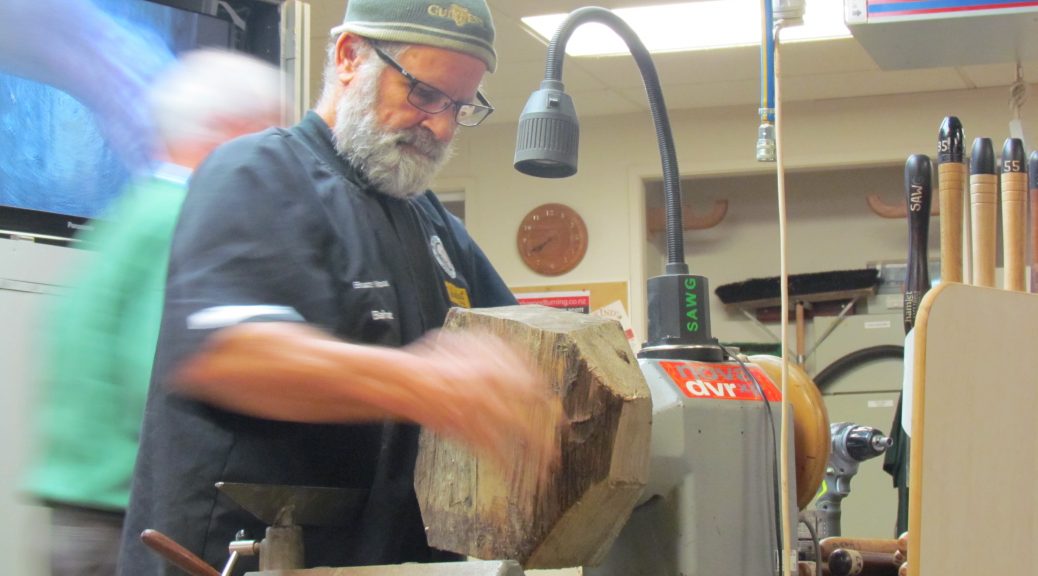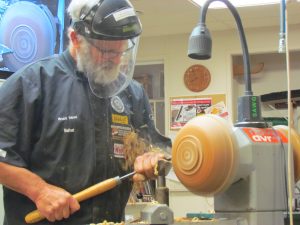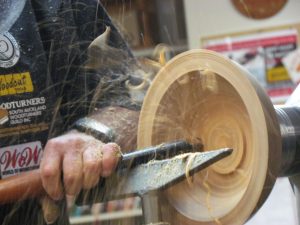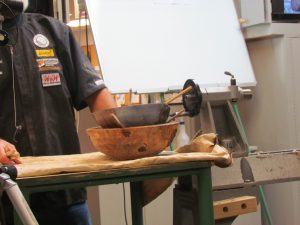Club Meeting: 29 June 2016
Report by: Strett Nicolson
After a brief introduction explaining the ‘what’ and ‘why’ of wet wood bowl turning Bruce mounted a piece of wet swamp kauri on a face plate using tek screws. Because the blank was rather more unbalanced than expected the start turning speed was 250rpm. For safety sake he brought up the tail stock and used the full face mask until the wood was more balanced.
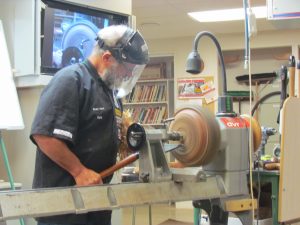 At this point, using a skew chisel ( and obviously a stationary lathe) he dug out loose bark to check the depth of the bark. He then flattened the face , marked the center and cut a 100mm spigot with his “ make it your bloody self” tool.
At this point, using a skew chisel ( and obviously a stationary lathe) he dug out loose bark to check the depth of the bark. He then flattened the face , marked the center and cut a 100mm spigot with his “ make it your bloody self” tool.
Floor question: Would you use a bowl saver tool on a piece of wood like the one you are turning now? Answer, “No!”
While hollowing out he suggested that a wet bowl needs to be about 25mm thick and an even thickness at the bottom of the bowl as well. Then marked and cut a recess of 70mm in the inside of the bowl , not forgetting to mark the centre again for accurate remounting once the bowl is dry.
Floor comments: 1. To remount one can also turn a plug and glue it in the recess. 2. A spigot can be left on the inside as well.
Remove from lathe and paint with log sealer and store for 12 months or dry by freezing and placing in fridge for 2 weeks. The bowl will lose approximately 1/3 of its weight by the time it is dry so it is important to weigh and record the wet weight, then check weight loss regularly till satisfied it is dry enough to finish the turning.
Complete the bowl once dry ( 12 months later) remembering that in the drying process the bowl may be as much as 5mm out of original shape. Take this into account when deciding on final shaping.
To remove the foot on the bottom of the bowl fix the bowl in a rubberised face plate and hold up with tails stock, or using cole jaws set to size, or fix with vacuum chuck and hold in place with tail stock.
Floor Question: Because log sealer is a lubricant, is there a chance that the jaws won’t hold the bowl safely? Answer, “No!”
